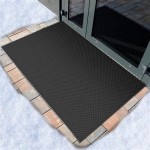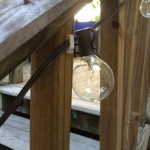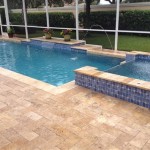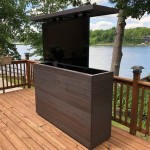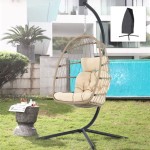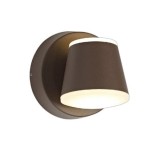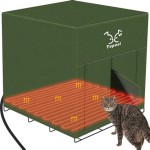Outdoor Dining Table Seats 12: Considerations and Options
The provision of outdoor dining spaces has become increasingly valued, extending living areas beyond the confines of interior walls. When accommodating larger groups, an outdoor dining table designed to seat 12 individuals presents a significant undertaking. The selection process requires careful assessment of various factors, encompassing materials, dimensions, aesthetics, and environmental resilience. This article will provide a comprehensive overview of considerations relevant to selecting an outdoor dining table capable of comfortably seating 12 people.
Space and Dimensions
The most immediate consideration when choosing an outdoor dining table for 12 is the available space. Measuring the area where the table will be situated is crucial. The table's dimensions must not only accommodate the seating configuration but also allow ample room for movement around the perimeter. A cramped environment can significantly detract from the dining experience. Minimum clearance of at least three feet around the table is generally recommended to facilitate comfortable passage. Consideration must also be given to potential obstructions such as walkways, landscaping features, or architectural elements. Failing to account for these spatial constraints can lead to logistical difficulties and an undesirable dining setting.
Beyond the overall footprint, the shape of the table also influences spatial efficiency. Rectangular tables are a common choice, typically ranging from 9 to 12 feet in length to comfortably seat 12. However, the width should also be considered, aiming for at least 42 inches to provide adequate space for place settings and serving dishes. Oval tables offer a more visually appealing and arguably sociable setting, distributing seating more evenly around the table. Round tables, while aesthetically pleasing, can be less practical for seating a large number of people, as they require a much larger overall area to accommodate the same number of diners. Careful deliberation of these factors will help ensure the table is proportionate to the outdoor space and optimizes both functionality and visual harmony.
When evaluating dimensions, it is essential to consider the chairs that will accompany the table. The size and style of the chairs will impact the overall space required. Armchairs, while offering enhanced comfort, typically require more space than armless chairs. The height of the chairs should also be compatible with the table height, ensuring a comfortable dining posture. Furthermore, the chairs should be constructed from materials that complement the table and withstand outdoor elements. The interplay between table dimensions and chair specifications is critical for creating a functional and aesthetically pleasing outdoor dining arrangement.
Material Selection and Durability
The material of the outdoor dining table significantly impacts its longevity and resilience to environmental factors. Different materials offer varying degrees of resistance to weather elements like sunlight, rain, and temperature fluctuations. Choosing the right material is therefore critical for minimizing maintenance and ensuring long-term usability. Common materials used for outdoor dining tables include wood, metal, and synthetic options, each possessing distinct advantages and disadvantages.
Teak wood is a popular choice for outdoor furniture due to its natural resistance to decay, insects, and moisture. Its inherent oils provide protection against the elements, making it a durable and low-maintenance option. Over time, teak will weather to a silver-gray patina, which some find aesthetically appealing. Iroko wood is another durable hardwood option, known for its stability and resistance to rot. However, hardwood tables are generally more expensive than other materials, potentially influencing budget considerations.
Metal frames, typically aluminum or wrought iron, offer strength and durability. Aluminum is lightweight and rust-resistant, making it a suitable option for coastal environments. Wrought iron, while heavier and more robust, requires regular maintenance to prevent rust. Metal frames are often combined with table tops made of tempered glass, stone, or synthetic materials. Powder-coated finishes can enhance the weather resistance of metal frames and provide a wider range of color options.
Synthetic materials, such as high-density polyethylene (HDPE) and resin wicker, offer a low-maintenance alternative to natural materials. HDPE is a durable and weather-resistant plastic that mimics the appearance of wood. Resin wicker is a synthetic material woven over a metal frame, providing a classic aesthetic with enhanced durability. Synthetic materials are resistant to fading, cracking, and warping, making them a practical choice for outdoor environments. When selecting synthetic materials, it is important to prioritize high-quality options that are UV-resistant and designed for outdoor use. Lower quality plastics can become brittle and prone to cracking over time.
When choosing the table top material, considerations include durability, aesthetics, and maintenance. Tempered glass is a popular choice for its sleek appearance and ease of cleaning. However, glass can be susceptible to scratching and breakage. Stone table tops, such as granite or marble, offer a luxurious aesthetic and exceptional durability. However, stone can be heavy and require specialized maintenance. Ceramic or porcelain tile table tops offer a combination of durability, aesthetics, and ease of cleaning, making them a versatile option for outdoor dining tables.
Style and Aesthetics
The aesthetic appeal of the outdoor dining table must complement the overall design of the outdoor space, creating a cohesive and inviting atmosphere. The style of the table should align with the architectural style of the house and the surrounding landscape. Whether the desired aesthetic is modern, traditional, rustic, or minimalist, the table should contribute to the overall visual harmony of the outdoor environment.
Modern outdoor dining tables often feature clean lines, minimalist designs, and materials such as metal, glass, and sleek synthetic options. These tables often incorporate geometric shapes and neutral color palettes, creating a sophisticated and contemporary look. Traditional outdoor dining tables typically showcase classic designs, featuring materials such as wood, wrought iron, and wicker. These tables often incorporate ornate details and warm color palettes, creating a timeless and elegant atmosphere. Rustic outdoor dining tables embrace natural materials and textures, such as reclaimed wood, stone, and woven elements. These tables often feature weathered finishes and earthy tones, creating a cozy and inviting ambiance.
Beyond the general style, specific design elements can influence the aesthetic impact of the table. The shape of the legs or base can contribute to the overall look, with options ranging from simple straight legs to ornate pedestals or sculptural bases. The edging of the table top can also influence the aesthetic, with options ranging from straight edges to rounded edges or decorative moldings. The color palette of the table should complement the surrounding environment, incorporating colors that blend harmoniously with the landscape and architectural features.
The choice of chairs significantly impacts the overall aesthetic of the dining set. Chairs should complement the style of the table and provide comfortable seating for guests. Options include armchairs, side chairs, benches, and stools. The materials and finishes of the chairs should align with the table and the surrounding environment, creating a cohesive and visually appealing arrangement. The use of cushions and pillows can add comfort and style, allowing for personalization and enhancing the overall ambiance.
Lighting plays a crucial role in creating an inviting outdoor dining atmosphere. Strategically placed lighting can enhance the aesthetic appeal of the table and surrounding area, creating a warm and welcoming environment. Options include string lights, lanterns, candles, and spotlights. The type of lighting should be appropriate for the style of the table and the desired ambiance. Soft, ambient lighting can create a relaxed and intimate setting, while brighter lighting can facilitate social interaction and visibility.
Accessories such as tablecloths, placemats, and centerpieces can enhance the aesthetic appeal of the outdoor dining table and create a personalized setting. Tablecloths can add color, texture, and pattern to the table, while placemats can define individual place settings and protect the table surface. Centerpieces can add visual interest and focal points, incorporating elements such as flowers, candles, or sculptures. The choice of accessories should complement the style of the table and the overall design of the outdoor space.
Ultimately, selecting an outdoor dining table that seats 12 requires a comprehensive understanding of the available space, material properties, and desired aesthetic. Careful consideration of these factors will contribute to a functional and visually appealing outdoor dining environment.

Teak Dining Set 12 Seater 13 Pc Large 117 Rectangle Table And Stacking Arbor Arm Chairs Outdoor Patio Grade A Wood Wholesaleteak Wmdsabo Walmart Com

Zest 12 Seat Rectangular Dining Set With Fire Pit Table

12 Person Patio Dining Sets At Lowes Com

Desert 12 Seat Family Dining Set Available In 2 Colours Zoo Interiors

Teak Dining Set 12 Seater 13 Pc Large 117 Rectangle Table And Stacking Arbor Arm Chairs Outdoor Patio Grade A Wood Wholesaleteak Wmdsabo Walmart Com

Teak Outdoor Furniture Nantucket Dining Set Seats 12 Goldenteak

Teak Dining Set 12 Seater 13 Pc Large 117 Rectangle Table And Lua Stacking Arm Chairs Outdoor Patio Grade A Wood Wholesaleteak Wmdslum Walmart Com

Fiori 6 Ft Square Teak Dining Table Rustic Outdoor Furniture

10 And 12 Seater Outdoor Jarrah Settings Lifestyle

Zest 12 Seat Rectangular Dining Set With Fire Pit Table


